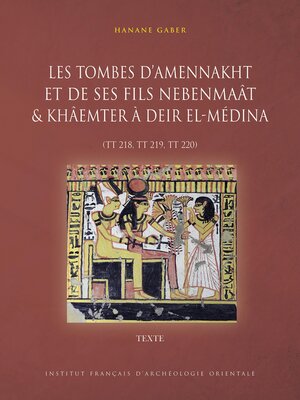Les tombes d'Amennakht et de ses fils Nebenmaat et Khaemter a Deir el-Medina (TT 218, TT 219, TT 220)
ebook ∣ Memoires publies par les membres de l'Institut francais d'archeologie orientale
By Hanane Gaber

Sign up to save your library
With an OverDrive account, you can save your favorite libraries for at-a-glance information about availability. Find out more about OverDrive accounts.
Find this title in Libby, the library reading app by OverDrive.



Search for a digital library with this title
Title found at these libraries:
| Library Name | Distance |
|---|---|
| Loading... |
The tombs of Amennakht, Nebenmaat and Khameter (TT 218-220), three craftsmen who lived under the reign of Sethy I and Ramesses II, form a unique familial complex in Deir el-Medina and in the Theban necropolis. This complex is distinguished both by its architecture and by the decoration of its underground funerary chambers. The edition of these tombs includes archaeological records, description of the scenes, translation of the texts, commentaries and synthesis. A comparison of the religious content of images and texts with contemporary funeral literature, in particular the Book of the Dead and Amduat, reveals its originality. Nebenmaat and Khaemter opted for monochrome paintings in their burial chambers, decorated with yellow figures on a white background. Nebenmaat created original scenes, including some gods with unexpected looks such as Osiris with an ibis head. As for Khaemter, he is assimilated to Osiris in an unusual way when he appropriates his attributes and his appearance. Amennakht decorated his two burial chambers with polychrome figures on a yellow background. His first chamber is characterised by an original and specific thought and its "made-to-measure" feature. Entirely dedicated to Re, this chamber prefigures the Saite tombs.







